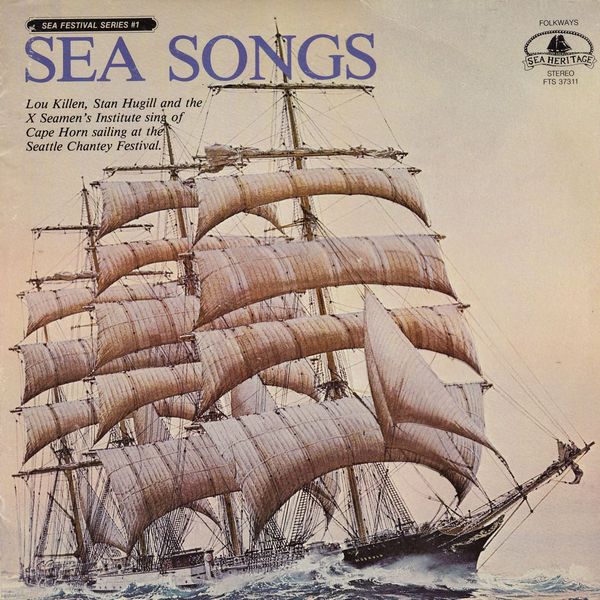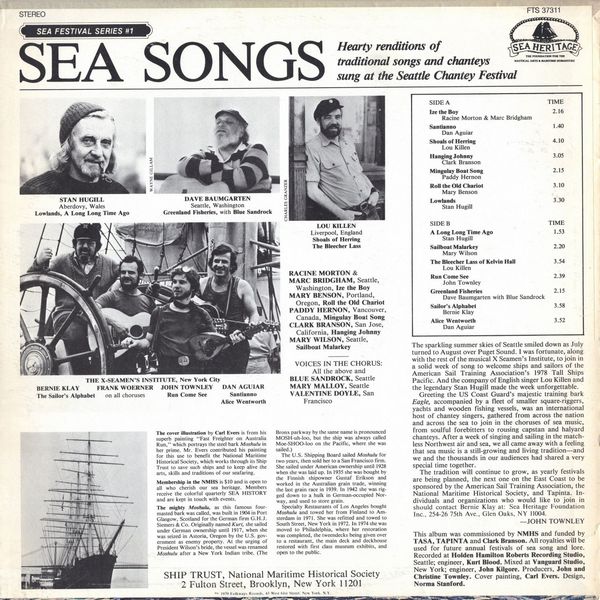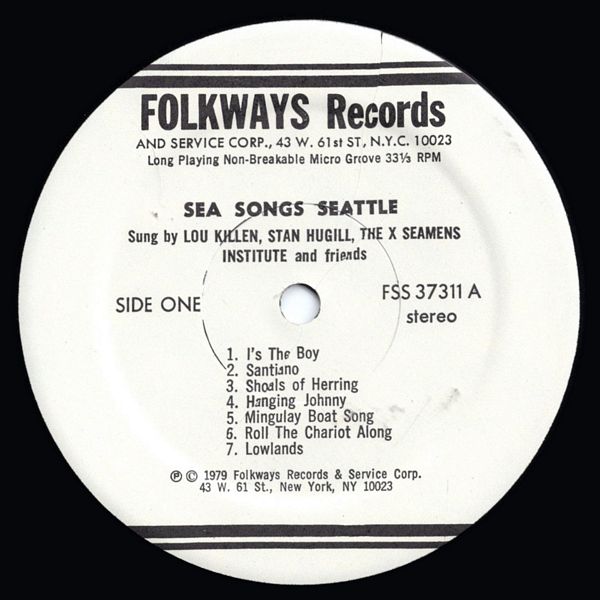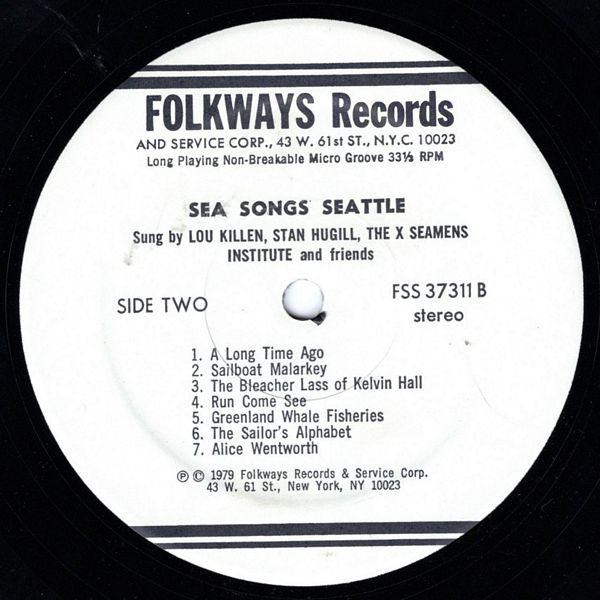
 |



|
| more images |
Sleeve Notes
This album was commissioned by NMHS and funded by TASA, TAPINTA and Clark Branson. All royalties will be used for future annual festivals of sea song and lore.
The cover illustration by Carl Evers is from his superb painting "Fast Freighter on Australia Run," which portrays the steel bark Moshulu in her prime. Mr. Evers contributed his painting for this use to benefit the National Maritime Historical Society, which works through its Ship Trust to save such ships and to keep alive the arts, skills and traditions of our seafaring.
The mighty Moshulu, as this famous four-masted bark was called, was built in 1904 in Port Glasgow, Scotland for the German firm G.H.J. Siemers & Co. Originally named Kurt, she sailed under German ownership until 1917, when she was seized in Astoria, Oregon by the U.S. government as enemy property. At the urging of President Wilson's bride, the vessel was renamed Moshulu after a New York Indian tribe. (The Bronx parkway by the same name is pronounced MOSH-uh-loo, but the ship was always called Moe-SHOO-loo on the Pacific, where she was sailed.)
The U.S. Shipping Board sailed Moshulu for two years, then sold her to a San Francisco firm. She sailed under American ownership until 1928 when she was laid up. In 1935 she was bought by the Finnish shipowner Gustaf Erikson and worked in the Australian grain trade, winning the last grain race in 1939. In 1942 she was rigged down to a hulk in German-occupied Norway, and used to store grain.
Specialty Restaurants of Los Angeles bought Moshulu and towed her from Finland to Amsterdam in 1971. She was refitted and towed to South Street, New York in 1972. In 1974 she was moved to Philadelphia, where her restoration was completed, the tweendecks being given over to a restaurant, the main deck and deckhouse restored with first class museum exhibits, and open to the public.
The sparkling summer skies of Seattle smiled down as July turned to August over Puget Sound. I was fortunate, along with the rest of the musical X Seamen's Institute, to join in a solid week of song to welcome ships and sailors of the American Sail Training Association's 1978 Tall Ships Pacific. And the company of English singer Lou Killen and the legendary Stan Hugill made the week unforgettable.
Greeting the US Coast Guard's majestic training bark Eagle, accompanied by a fleet of smaller square-riggers, yachts and wooden fishing vessels, was an international host of chantey singers, gathered from across the nation and across the sea to join in the choruses of sea music, from soulful forebitters to rousing capstan and halyard chanteys. After a week of singing and sailing in the matchless Northwest air and sea, we all came away with a feeling that sea music is a still-growing and living tradition — and we and the thousands in our audiences had shared a very special time together.
The tradition will continue to grow, as yearly festivals are being planned, the next one on the East Coast to be sponsored by the American Sail Training Association, the National Maritime Historical Society, and Tapinta.
— JOHN TOWNLEY